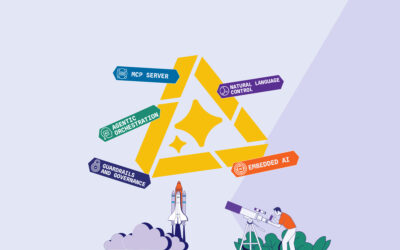Most insurance core systems vendors will tell you that they embrace customer centricity, and yet every aspect of their policy administration, claims, and billing systems revolve around a policy number. That means customers with multiple insurance products end up with multiple customer records. Those customer records may even exist in separate systems. All of which frustrates insurers’ efforts to gain a holistic understanding of the customer and deliver a meaningful and personalized customer experience.
To compensate for the inherent limitations of their core systems, some of which are just five years old, insurers often add layers of complexity on top of their modern legacy core systems via customer relationship management (CRM), digital engagement packages, data lakes and warehouses, and complex integrations to third-party data and systems to assemble a comprehensive view of their customers.
But with customers now demanding real-time interactions, personalized products, and self-service opportunities, traditional core systems are not going to cut it anymore. And customers’ expectations are only going to get more sophisticated and demanding as time goes on.
From the insurer’s perspective, something has got to change. After all, it’s only going to get more difficult and expensive to develop, deliver, support, and maintain that functionality, given the inherent limitation of their legacy core systems.
Coretech: customer-centric down to the data model
But there’s another option for insurers looking to differentiate themselves with excellent customer experiences. In the coretech model, customer centricity is more than an idea. It’s in the data model, which puts the customer record at the center of insurance operations.
Putting the customer record, rather than the policy number, at the center of insurance operations empowers insurers to fundamentally redefine their relationships with the insured and expands sales and services opportunities, too.
To start with, in order to offer personalized customer experiences, real-time omnichannel access, and customer self-service options, insurers need fast access to comprehensive and correct customer details.
By consolidating contact information, history, preferences, demographics, and by leveraging powerful application programming interfaces (APIs), coretech simplifies real-time integrations with insurtechs, data sources, and other systems. It also accelerates speed-to-market because, simply put, there are fewer and simpler integrations necessary to access and update that customer data.
From the outside, coretech allows the customer to interact with their data and access rich products and services digitally and in real-time. They don’t wait until a batch process finishes overnight, for example, or for janky manual processes to play out through intermediaries. Coretech also extends that speed, simplicity, and convenience to authorized parties, like agents, brokers, CSRs, and adjusters, through persona-based apps, and by putting insurance ecosystems within reach of even smaller insurers.
Coretech consolidates multiple lines of business on a single platform
From the inside, coretech allows insurers to redefine their relationships with customers and between other entities. That’s true for relationships between insureds and their spouses and children, between a commercial policyholder and the drivers within that policy, or any sort of business relationship.
Further, the ability to create “designated contacts,” in human resources, billing, or accounts payable, for example, allows coretech to support organizational customers, like group and voluntary benefits insurers, as well as property and casualty (P&C), life and annuity (L&A), or any line of business, on a single platform.
The flexibility to consolidate and support several lines of business on a single platform offers enormous operational efficiencies. But it also expands insurers’ options in a rapidly evolving marketplace.
Dental insurers, for example, can expand into short- and long-term disability, critical illness, and even life insurance; insurers can launch direct-to-consumer products or divisions, get closer to customers, and reconfigure their entire business model. Coretech takes the risk out of greenfield opportunities and enables true test and learn. Hit upon a winning proposition, and coretech leverages its cloud-native architecture to scale up. Try doing that with your legacy core system.
The ability to manage different lines of business from a single platform also dramatically expands and simplifies insurers’ ability to create and run up-sell and cross-sell campaigns, launch insurance ecosystems, and get closer to its customers with frictionless digital interactions. This is an enormously important capability for today’s insurance buyers and a focal point of recent insurance market research.
In all its rapidly changing forms, consumer technology is shaping peoples’ patience and expectations for when and how they communicate and do business. They want answers instantly. From checking their account and payment statuses to searching for and purchasing new products and services, they are not afraid to do it themselves. Accordingly, these evolving customer expectations are prompting insurers to reconsider their technology investments and even their business models. But the reality is that traditional core systems simply compound insurers’ tech debt.
For insurers looking to achieve real customer-centricity — even while technology and customer expectations continue to evolve — they need something different. They need coretech.
Want to find out how EIS’ coretech can help you achieve customer centricity? Talk to us.




